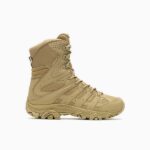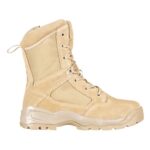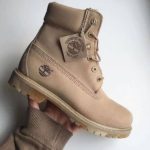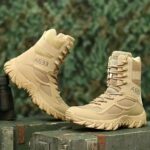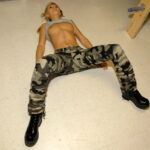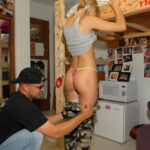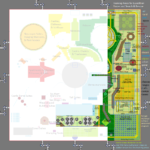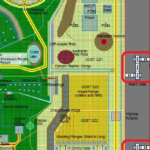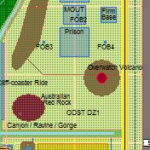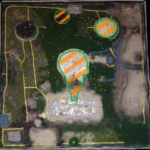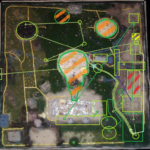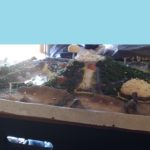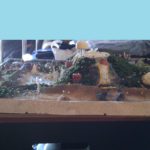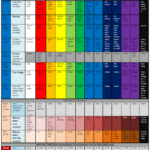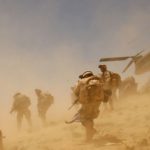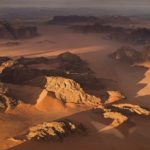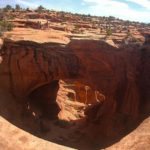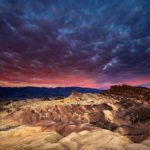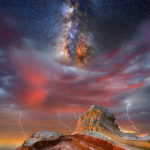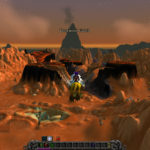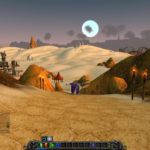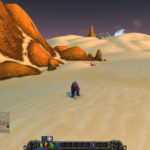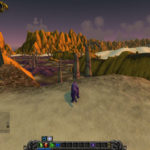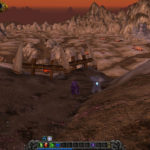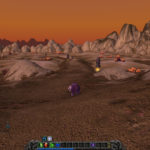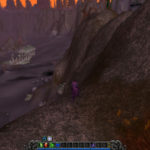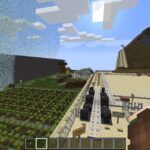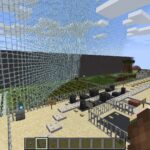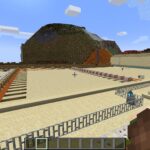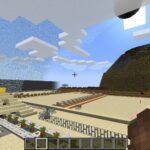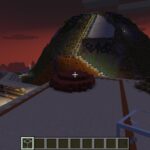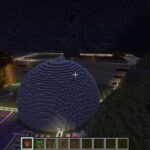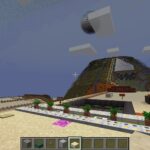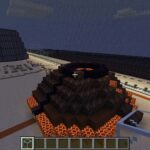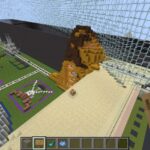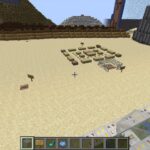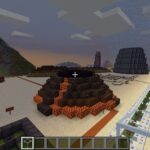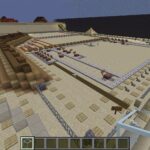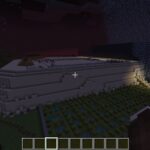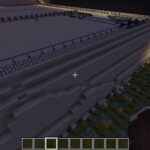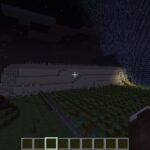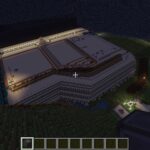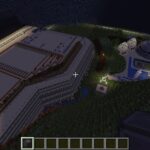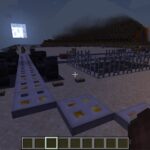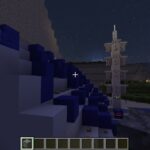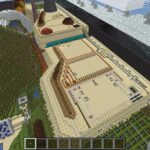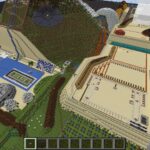Inisfree’s military / Search & Rescue (S&R / SAR) personnel train here –ever since the 19th grade.
–
Table of Contents:
- The Basics
- Fully-trained Philosophy
- Military Martial Arts Program
- Medieval Warfare Drills; Low-tech and No-tech Training
- Certifications One Can Earn Here
- Prescribed Footwear
- Training Facilities Directory
- Barracks for Trainees & Instructors
- Ranges for Troops & Vehicles; Small-arms and Crew-served Weapon-systems:
- Rehearsal Sites and Landing Zones
- Staging Areas and Airstrips
- Towers and Other Live-fire Classrooms
- Trails and Outdoor Obstacles
- Ranges
- Military Training Region’s Features Directory
- Military Forces Directory
- Chow Halls & Field Dining
- Medallions
- Rendering Proper Military Greetings
- Inspections
- Graduations
- Overall (Images Begin)
- Terrain
- From WoW
- 2022 Update: Sequence of Sites
- 2023 Update: 2022 Scale-model in Minecraft
- Humor
- 2024 April/+
–
The Basics:
This is the “side” of the Inisfreean property where our military, including SAR/S&R (Search and/& Rescue) trains. It is restricted-access; off-limits to anyone other than
- those who are training, and
- those who are training them.
Rare exceptions can be made, such as for guided tours of visiting dignitaries confirmed by pre-screening to be fully compatible with our culture/way.
Inisfreean “basic training” (a.k.a. Boot Camp) takes Inisfreeans to levels well above and beyond the SpecWar community members of the Outlands, fusing all of the techniques and tricks of groups such as
- Delta Force,
- DEVGRU,
- D.I.A.,
- DynCorp,
- F.A.S.T.,
- G.I.G.N.,
- Green Berets,
- G.S.G. 9,
- Kidon Mossad,
- Marine Force Reconnaissance,
- M.I. 6 (S.I.S.),
- N.S.A.,
- N.E.S.T.,
- Para-rescue Jumpers,
- Red Cell,
- S.A.S.,
- S.B.S.,
- Se.A.L.s (a.k.a. SEALs),
- Spetsnaz,
- Triple Canopy, and
- U.F.O.R.T,
just to name a few. After one full year of this military training of ours, and especially after two or more, graduates are at or above the level of operators in all those aforementioned SpecWar groups. They are counted as “Tier 0” war-fighters; the best of the best.
For reference:
- Tier 0 = black operations agents/operatives, sometimes working alone, such as assassins and spies; always working on the most difficult -and sometimes arguably suicidal- tasks (e.g. the I.M.F. from the Mission Impossible series)
- Tier 1 = some of the most highly-trained, and who can carry out the most complex and sensitive/classified missions (e.g. Delta Force)
- Tier 2 = specialized units that sometimes support Tier 1 teams (e.g. Army Rangers)
- Tier 3 = conventional forces; regular troops and their support personnel (e.g. Army Infantry)
This training is part of our 20-year school system, too; all Inisfreeans living and training in this military region of our city are here because they are preparing to graduate the 19th grade. Think of it like an extended field-trip or more-serious version of (J)ROTC. It is normal for our natives and citizens to progress this way.
Vehicles trained on/with during this time include amphibious and all-terrain ones (ATVs), such as the Gibbs Aquada and Sherp variants.
There is plenty of room and time for worthy Outlanders to come and use our shooting ranges, training tower, and related facilities, and on special occasions such people can even train right alongside the Inisfreeans.
…
2023 October: Since nothing other than one’s own body is allowed to be brought into our realm, with extremely few exceptions (such as returning vehicles of our own), troops coming here to train let us know in advance which kinds of gear and vehicles they want to train with, we then 3D-print it and stage it for them, and when they are done training with it we store it below ground (in our silos if it fits, and aircraft/vehicles in our Military Aerospaceport).
–
Fully-trained Philosophy:
Unlike Outland militaries, which are trained to know as little as possible, Inisfreean military forces are trained to be one-person conquering-machines (or, more accurately, at least in our case, one-person genius-level mutually-agreeable resolution-machines, conquering conflict/war itself –often before it even begins). We honor them by trusting them with all military training, not just compartmentalized, watered-down, sub-standard, officer-approved, partial training intent on crippling/controlling them with over-specialization. We also expect the worthy Outlanders whom we train to rise up and take over (defeating their would-be oppressors out there) if they are being oppressed or neglected by their Outlands authorities. Such was prescribed in many of their Constitutions, after all, and is the motto of the Green Berets (Army Special Forces soldiers); “De Oppresso Liber” (“To Free the Oppressed”).
A fully-trained member of the Inisfreean military, or anyone who has completed a large portion of the training we offer here, is not that dissimilar in capabilities… from legendary figures such Spartan “Master Chief” John 117, or Ghost November “Nova” Annabella Terra.
By the time you complete at least one year of training here, you will be familiar with the use/s of all of the following items; everything in our survival-bags and deployable-vessels.
Our Emergency/Survival Kit/Backpack Items:
(and every kit/backpack is a floating Pelican case)
- 550 cord (type-III paracord)
- Airhorns
- Aloe Vera ointment and edibles
- Ash
- Axes (ice and regular)
- Beacons with I.R. cap
- Binoculars
- Bug/Mosquito repellent, natural
- Can openers
- Canteens, flexible
- Chem-lights
- Clothespins, large/oversized
- Compasses
- Condoms (for waterproofing)
- Crampons and snowshoes
- Dry-bags
- Duct tape
- Ear-plugs and electronic ear-muffs (for lessening ice-quaking sounds)
- Essential Oils
- Extra socks and underwear
- Fabric patches
- Fire starters (flint, kindling, lighters, matches, micro-torches, tinder tabs, etc.)
- Firearms, small/personal (pistols, revolvers rifles, shotguns, and their cleaning kits and ammo.)
- First Aid kits (including antidotes for allergies, bee stings, poison, poison ivy, swelling, venom, etc.)
- Flares
- Flashlights, kinetic-recharging
- Foil
- Folding saws
- GPS devices; handhelds
- Gas masks with extra filters
- Geiger meters
- Gloves for climbing
- Goggles (some for skiing (anti-fog), some for swimming)
- Hand winches (“Come Alongs”)
- Helmet mosquito netting covers and patches
- Hygiene kits (dental floss, mouthwash, toothpaste, tweezers, etc.)
- Jackets, lightweight, breathable
- Kayaks, collapsible (with oars)
- Laser pointers
- Life-preserver vests, auto-inflating
- Litmus kits; ph testers
- Machetes
- Maps, paper, laminated –and waterproof map bags
- Mirrors for signaling
- Mylar/space/thermal blankets
- Nail clippers
- Olfactory scanners alert if any smells are on teammates which will attract wildlife
- Ponchos and Liners
- Radios, powered and with hand-crank backups
- Rappelling gear (carabiners, chalk, chalk bags, harnesses, ropes, etc.)
- Reflective panels, roll-able
- Sarongs
- Seed packets (for starting crops/farms)
- Sewing kits
- Shovels, collapsible
- Sleeping bags
- Slingshots
- Smoke grenades
- Solar still (simple desalination)
- Steel wool
- Sunglasses, ballistic
- Swiss army knives and multi-tools (Gerbers, etc.)
- Tarps
- Tents
- Toiletries
- Utilities; functional nature-colors clothing
- Vegan MREs
- Vegan supplements and electrolyte tablets
- Warming layers
- Water filters
- Water purification tablets
- Waterproof gear (rain jacket, rain over-pants, etc.)
- Waterproof notepads and pens
- Whistles
- Zip-ties
Survival/Convenience Items in the Vehicle/Ship/s; in Addition to the Contents of the Backpacks:
- Bilge pumps
- Body-bags (excellent against high and/or cold wind) and evidence bags
- Bows & arrows
- Bug/Mosquito lasers
- Bug/Mosquito traps (tape, zapper)
- Candles and candle components
- Canning supplies
- Chains with end-hooks
- Coolers (Yetis) and mini-fridges
- Crampons and snowshoes
- Dry-bags
- Duct tape
- Ear-plugs and electronic ear-muffs (for lessening ice-quaking sounds)
- Essential Oils
- Extra socks and underwear
- Fire starters (flint, kindling, lighters, matches, micro-torches, tinder tabs, etc.)
- Firearms, small/personal (pistols, revolvers rifles, shotguns, and their cleaning kits and ammo.)
- First Aid kits (including antidotes for allergies, bee stings, poison, poison ivy, swelling, venom, etc.)
- Flares
- Foil
- Fuel & water cans/jugs
- Furniture, collapsible (card tables, lawn chairs)
- GPS devices; handhelds
- Garbage bags
- Gas masks with extra filters
- Geiger meters
- Ghillie suits
- Gloves for climbing
- Goggles (some for skiing (anti-fog), some for swimming)
- Hand winches (“Come Alongs”)
- Helmets with lights
- Hydroelectric generator/turbine, man-portable
- Inflatable mattresses and inner tubes
- Kayaks, collapsible (with oars)
- Lanterns
- Laser pointers
- Life-preserver vests, auto-inflating
- Litmus kits; ph testers
- Machetes
- Mallets
- Massage tables (for acupuncture, etc.)
- Materializers
- Medicinal plants
- Mylar/space/thermal blankets
- Nail clippers
- Olfactory scanners alert if any smells are on teammates which will attract wildlife
- Q-tips
- Radios, powered and with hand-crank backups
- Rafts, un-flip-able
- Rappelling gear (carabiners, chalk, chalk bags, harnesses, ropes, etc.)
- Reflective panels, roll-able
- Seed packets (for starting crops/farms)
- Sewing kits
- Sex toys
- Shampoo and conditioner, healthy/natural
- Shovels, collapsible
- Smoke grenades
- Solar panels, man-portable
- Stretchers
- Tea kettles
- Toilets, man-portable
- Tow straps
- Towels and washcloths
- Washer & Drier
- Waste bags
- Water, bottled
- Wet-suits and dry-suits with SCUBA gear
- X-ray device / medical tricorder
- Yardsticks
- Yarn
- Ziploc bags
There will be instruction and practice times with each of those items.
–
Military Martial Arts Program:
Like in MMA, we combine the best of many styles of fighting into our own (just as Master Bruce Lee wisely advised; “the greatest fighting style in the world… is your own”). We include some of the moves and forms of
- the Gun Katas,
- Jeet Kune Do,
- Krav Maga,
- Ninjutsu, and
- Sayoc Kali.
This new fusion of methods/styles has replaced MCMAP here in Inisfree; it is the main way of melee our trainees are taught to use when wearing power-armor or related suits & gear.
For those not training to become a member of our military, you can learn and practice some of this martial art program/style of ours in either
- our gyms, or
- our exclusive dojo (reserved for guests of the King).
We do not limit/restrict it to only be taught to military / law enforcement. If you are approved for visits to, or residency in, Inisfree, then we’ll help you study and master it; you are balanced, compatible with us, and worthy.
–
Medieval Warfare Drills; Low-tech and No-tech Training:
We train here in the “timeless” ways, too; soldiers and other “operators” can learn/hone skills in a wide range of medieval and ancient warfighting disciplines.
- archery & crossbows (with advanced courses hosted at the Equestrian Escape)
- axes & tomahawks
- battering-ram teams
- bivouac procedures
- catapult & trebuchet employment
- hook-down shields (S.C.A. style)
- improvised weapons & armor
- javelins / spears
- natural camouflage
- ‘on line’ fighting formations
- swordsmanship
- ‘turtle’ shield formations
Like our footwear, all of those items/implements are produced at our Gear Factory. They are also sometimes made by hand at the forges and smiths of the Kathedrom.
Certifications One Can Earn Here:
Beyond our standard and medieval military operations training, we also offer the following, all of which are highly sought-after skill-sets most Antarctic research-station recruiters look for when screening applicants:
(The following bullet-notes are qualifications which can be earned as courses shorter than the baseline/mandated ones to graduate our 19th grade; the following do not require a full year of study.)
- 9,000-lb. knuckle-boom crane operation (as part of “Work-horse” vehicle operations/licensing)
- ASC Environmental Health & Safety and Quality Assurance goals and requirements
- Alerton Ascent compass software
- AutoCAD C3D 2017 and/or Carlson Survey 2017 (for precise designing of military outposts and related facilities to later be 3D-printed by, or at least under guard of, deployed military forces)
- Building Automation Systems
- Commercial Driver’s License (CDL) with air-brake endorsement (hosted on this section of our city’s highway, and especially important for driving the cargo-trucks to/through our Highway Pyramid)
- Crevasse Rescue Training (also here)
- “Crypto”/”Fill” procedures and concepts; for military-level encryption/communications; field-radio training, including reconfiguring
- Deltek
- Direct Digital Control (DDC)
- Drone Pilot certification by the FAA
- Electrical safety procedures (NFPA 70E and OSHA) –because so much of the military/SAR hardware/equipment we use/teach here involves electronics (optics, communications, engines, energy weapons, shielding, etc.)
- Emergency Dispatcher certification from APCO, NENA, or a state agency, and the DoD‘s Telecommunicator I/II certification
- Fall protection and respirator use
- Fuel Master (or equivalent fuel-management software)
- Global Mapper software
- Ground-Penetrating Radar (GPR); read and interpret GPR data on a tractor or snow machine traverse for crevasse detection
- HF/VHF/Satellite telephone equipment
- Hägglunds (hosted at our Snow-dunes area)
- ICODES
- Incident Command System (ICS) 100 and 200 certifications (via FEMA)
- International Society of Sustainability Professionals “Sustainability Associate” and “Certified Sustainability Professional”: ISSP-SA (now the SEA; Sustainability Excellence Associate) and/or ISSP-CSP (now the SEP; Sustainability Excellence Professional)
- Land Survey Intern / SIT (NCESS Standards)
- MAXIMO (by IBM); asset management and electronic corrective maintenance program
- Mattracks (hosted at our Snow-dunes area)
- Mobile cranes (as part of “Work-horse” vehicle operations/licensing)
- Mountain Guiding certification (via AMGA/IFMGA); the highest level of mastery in this field
- NASAR‘s Managing the Lost Person Incident (MLPI) certification
- National Electrical Code Grounding and Bonding requirements
- National Electrical Safety Code (NESC) and the principles of electricity
- OSAR procedures
- OSHA training; all certifications
- PII/SI/PHI policies and procedures for handling sensitive information
- PHR or SPHR
- PistenBully-s (hosted at our Snow-dunes area)
- Polar Training in Greenland (also here)
- Power-plant/Generator Mechanic
- Professional Certification as an Associate Safety Professional (ASP), Occupational Hygiene and Safety Technician (OHST), or Construction Health and Safety Technician (CHST)
- Programmable Logic Controllers (PLC)
- (how to) Read mountainous and glaciated terrain (and mountain weather conditions) and find safe routes
- SIPRNet use
- Solar-panel Installer (NABCEP – PV Installation Professional)
- Surveying Technical School certificate
- Trimble Business Center software
- Trimble GPS/GNSS equipment (RTK and Static)
- Trimble R8 & R10 GNSS survey system/Geomatics GPS software
- Trimble TSC3/Access software (survey data collection programs)
- Variable Frequency Drives (VFD)
- Welderator operation (3-in-1 welder-generator-compressor)
- Wilderness First Responder (WFR) / Wilderness Emergency Medicine (including CPR)
- Winter Mountaineering (via the American Alpine Institute)
- Winter Outdoor Educator (via the National Outdoor Leadership School)
Our military puts those skill-sets to use on a regular basis, especially during SAR work in remote/cold regions/worlds.
If you earn the right to know about and visit Inisfree, any/all of that training can be free for you.
*Pilot training is completed in LHS. Pilots at this stage of education/training are simply learning the intricacies of military aircraft, having already mastered flying/piloting in general. As part of pilot training here and there (back in LHS), pilots can learn how to use sigils to travel more quickly and with less fuel/energy.
–
Prescribed Footwear:
All Inisfreean military personnel wear Storm Trooper suit boots (for heavy operations), Converse combat sneaker-boots (for moderate operations), and Vibram foot-gloves (for light operations and post-hikes/’humps’). Guests in training may wear whatever footwear suits them the most. During non-training times, such as ‘weekend libo’, no footwear is prescribed; attendees may go barefoot or in sandals, etc.
Inisfreeans are made as tough as they come; they’re engineered and built that way. This means their feet are their prescribed footwear. They can walk on any surface with them, wearing boots and shoes only when it is the will of their Maker, Auz.
Footwear in Inisfree is manufactured at this facility.
–
Training Facilities Directory
Within our military training region, we have numerous different structures reserved for the housing, teaching, and critiquing of our personnel, visiting allied forces here for cross-training, and the occasional field-master or subject-matter expert.
See what each mass-training construct in Inisfree’s private military area looks like, and what it is for:
Barracks for Trainees & Instructors:
- Assassins; training to use the Inisfreean Assassin-suits and fly the AssassinPods
- Mech-pilot; training to operate the Inisfreean BattleMechs
- Pilots; training on Inisfreean Fighter-jets, MPHAs, DropShips, and ColonyPods
- Recruits; 19th-grade students
- Storm Troopers; training to use the Inisfreean Storm Trooper suits
* Many instructors live in the 2nd (predominantly military) Cliff-dwellings Complex.
Ranges for Troops & Vehicles; Small-arms and Crew-served Weapon-systems:
- Artillery Range/Parking (where Auz’s modified-limousine MLRS, based on his design from high-school, is staged)
- Impact Ranges
- Shooting Ranges
Rehearsal Sites and Landing Zones:
- Beach Assault Area/LZ; for amphibious landings and beach clearings/securing
- ColonyPod Strip/LZ; for air/Space-based mass-landings and large defensive formations
- Faux Prison
- Firm-base & 4 “satellite” FOBs
- “Inverted White Pail-shaped” Buildings Complex; for silent and fluid room-clearing after graduating from our Training Tower
Staging Areas and Airstrips:
Towers and Other Live-fire Classrooms:
Trails and Outdoor Obstacles:
- Canyon River-crossing
- Our “Crucible/Reaper” Trail
- Swamp Obstacle Course (a.k.a. “the O-course”)
–
Ranges:
We have several live-fire shooting/impact ranges as part of this military training region of ours. You’ll see Inisfreeans in training, as well as other/allied troops, practicing their marksmanship there almost every day. This involves hitting moving targets, sometimes during low-lighting, overnight, and smokescreen conditions.
For more information on all of the following, see our Shooting Ranges webpage.
- Small Arms; multiple short shooting-ranges
- Light Machine Guns; multiple intermediate-distance shooting-ranges
- Crew-Served; multiple long-distance shooting-ranges
- Tanks; multiple short & intermediate tank-targets shooting-ranges
- Artillery; one very-long-distance ‘overhead’ split-range
* We train on all Outlander weapons in case our own go down.
–
Military Training Region’s Features Directory:
In addition to our facilities/structures here, we have a lot of artificial landforms and natural terrain that we utilize.
- Baja Off-road Racing Truck Dirt Track: in view of our own Uluru
- Crucible Reaper Trail: the toughest hiking trail in Inisfree, inspired by the Marine Corps Boot Camp’s final recruits training hike in California
- Cut Pyramid: high-tech, neo-industrial complex; the pyramid with the wedges removed
- Devil’s Tower II: inspired by the Wyoming landform namesake
- Faux Prison: MOUT training (students live in the construct, and practice reclaiming it)
- Gear Auto-plant: where protective and other couture gear is 3D-printed
- Highway Pyramid: mass-teleporter for cargo truck and military convoy traffic
- Highway Sphinx: much larger than the original, this houses a major section of the GAH
- Highway Volcano: another faux landform, this doubles as a lookout post
- Impact Zone: where Inisfree’s artillery strikes (also used by the E.O.D. (Explosive Ordnance Disposal) teams for suspicious packages)
- Inverted Pyramid Pit ‘Hood: imagine Las Vegas’s Luxor casino interior flipped upside down and embedded many stories down into the ground
- Military Aerospaceport: all non-commercial air & Space traffic for the city
- NWO MIL TRNG Area: the abbreviation for ‘New World Order (the good version) Military Training Area’
- Nitro Circus-style Paintball Warfare Area: a full-scale military exercise without bullets
- Obstacle Course: beyond even those of American Ninja Warrior and American Gladiator (colloquially: the ‘O-course’), the area also includes the multiplayer Halo Map ‘clones’ beneath this swamp
- Shooting Ranges: for everything from pistols to sniper rifles and rockets
- Subterranean Prison: once planned to be a version of the offshore prison with magnetic boots featured in the film The Rock, this is now where kajirae are housed and trained when their Masters are busy or away
- Subterranean Quarantine Facility: where new guests begin their understanding of, and acclimation to, all the Inisfree has become, as well as where kajira candidates begin their training (also capable of doubling as the city’s main CDC-equivalent (Center for Disease Control) complex) —*though, obviously, we don’t do any of the corrupt/dishonest nonsense the CDC did/does
- Training Tower: several stories tall, and used for both dynamic entry and firefighting
- Vehicle Service Line: a set of parallel lanes bordered by a series of small buildings which can prepare, maintain, clean, inspect, unload, and even disassemble entire convoys within minutes
- White Rhino Motorpool: parking lot for Inisfree’s multi-purpose Armored Personnel Carriers (APCs)
These dozens of features included in this region of our realm are spread out over more than 20 square miles; training going on at any of them will never affect (interfere with) training going on at another.
–
Military Forces Directory:
Everyone in our armed forces are part of what we call Inisfree’s Star Fleet. That includes our entire forward-deployable (beyond-Inisfree) military force. It is divided into groups based on how many Inisfreean individuals are recommended for charting, monitoring, and protecting regions/volumes of Space.
To sum it all up, our entire military is based out of Inisfree and the secret/private star-system it links to, all of our personnel start with training right here in this region of our city, and they are then assigned to parts of our fleet, each part (sub-fleet) responsible for a different area of the Earth and Space.
–
Chow Halls & Field Dining:
Unlike in the Outlands, where militaries often starve, mal-nourish, and feed their best troops very questionable food, we believe in the Napoleonic teaching that ‘an army marches on its stomach’, so we feed ours only the finest. Chefs, not contract chow-hall workers (who were often hideously deformed and woefully undereducated out at the human bases of the Outlands), prepare the meals. Those meals are then offered on both feasting tables with plates, and at booths via nyotaimori; they are served atop the prone naked bodies of flawless supermodels, always looking to be in their primes. Inisfreean girls supplement these meals with ‘eating’ in ‘the field’ (oral sex), always offering their own bodies up as the living platters (i.e. having healthy food displayed atop them) for more nyotaimori whenever outdoor situations allow.
Human military leaders sometimes argue that troops should be put through hell, including with their diets, in order to prepare them for the rigors of wartime life/operations. While that stands to reason, it also demotivates/demoralizes entire military units, resulting in their minds becoming weak, if not wholly vestigial, and their bodies atrophying to a similar severe degree. From that, we then get sloppy manifestations; their bodies are unable to direct the weak energies from their minds, those minds not even being told they are capable of willing things into existence in the first place. In short, intentionally poor diets lead to proportionally-pathetic military campaigns, lifespans, and general outcomes while on deployment.
Feed your troops better, and you’ll get better results.
M.R.E. stands for Meal Ready to Eat, by the way.
–
Medallions:
Medals mean more than just recognition/accomplishment. Each means more benefits after your period of service; the more you help us with our campaigns, the more we help you with your own. Also, there are no taxes in Inisfree, nor is there any form of monetary currency or exchange; all awards are free and issued immediately upon achievement.
There are only 6 medals authorized for wearing with/on an/the Inisfreean uniform. They are to honor those who have participated in the only 6 campaigns our entire species/civilization has embarked on. For us, a medal represents everything that went into a massive operation, compared to a uniform/service-ribbon which (in our military/culture) represents an academic/training achievement/evolution/graduation.
For information about the uniforms they are placed on, see our Uniforms page here.
–
Rendering Proper Military Greetings:
The illogical and vestigial Outlander tradition of saluting only officers suggests that they have no loyalty or friendship to the enlistedmen. You should salute all military personnel, and only to show your face when it is masked by your helm’s faceplate.
When there is no helmet and face-plate concealing one’s face, or when their face-plate is already up and revealing their face, the Roman / NAZI salute is rendered. When a helmet and face-plate are concealing one’s face, the Medieval knight’s salute is rendered. *This salute has nothing to do with anti-Semitism; it is an ancient standard body gesture for indicating deep respect, as well as a hope for good health and fortune.
Out of uniform / off-duty, Inisfreean females prefer to be greeted with a loving hug and kiss. Yes, this means even a superior-ranking officer hopes her subordinates will warmly greet her like family/fuckbuddies.
Their way of politely requesting permission to enter a doorway/room is by lifting up their top to show their tits, then, while their top is still up like that, unzipping their pants or shorts to show their pussies. This is our equivalent of when a sailor stops at the top of a ship ramp to request permission to come aboard.
–
Inspections:
Ours involve female students (we don’t have recruits) letting themselves be stripped, if not showing up that way. Males in Outlands boot camps stand at attention in their boxer-briefs for hygiene inspections, and females here in the Inisfreean realm stand in whatever they were told to wear that time, letting the inspectors open up their clothing to reveal their flawless feminine physiques inside. They love doing this, as it makes them feel very accomplished, proud, and proper.
–
Graduations:
Month 5: Maiesta (Reverence & Graduations)
Week 3
Day 3: Tyr’s-day (war), May 9: Boot Camp Graduation (19th grade)
These are hosted on our version of a Marine Corps Recruit Depot’s (MCRD) parade grounds (a parking lot with some risers/stands for seating). You’ll find this area (which always looks like the cleanest and most unused parking lot you may have ever seen) near where our artillery practices firing. Don’t worry, though; we never have those long-range tanks firing any of their cannons or other guns during our graduation ceremonies.
–
Overall:
Courses, Alphabetical:
- Armor
Including all training and techniques of:
Armaments: small, medium, heavy
Ceramic Plates
Gear & Ammo. Auto-plants
Reactive Armor
SAPI & E-SAPI - Disguises (Disgui.)
- Dynamic Entry (including inverted rappelling) (Dyn.E.)
In: NWO MIL TRNG Zone fire-tower, MOUT, and Silos
And: S.P.I.E. to: plateau, desert, field, slope, yachts, courtyards, triple-canopy jungle, and finally the skyscrapers in SotU - Enhanced/Precision Marksmanship Program (EMP)
- Espionage (Espio.)
- Human Intel. Gathering & Counter-intelligence (HIG)
Including all training and techniques of: D.I.A., H.E.T., Kidon Mossad, M.I. 6 (S.I.S.), N.S.A. - Laundering (Laund.) –currency
- Ranges
Including all training and techniques of:
Small arms
Light machineguns
Crew-served weapon systems - Riverine operations (River.)
Including all training and techniques of:
S.B.S.
S.W.I.C. - Sabotage (Sabot.)
- Sea Air Land operations (SEAL)
Including all training and techniques of:
Airborne Rangers
DEVGRU
Marine Force Reconnaissance
ODST
Red Cell
S.A.S.
Spetsnaz - Sensitive Site Exploitation (SSE)
- Spartan & Medieval warfare (S&M)
- Special Purpose Insertion/Extraction (SPIE)
- Special Weapons And Tactics (SWAT)
Including all training and techniques of:
Blackwater
Delta Force
DynCorp
F.A.S.T.
G.I.G.N.
G.S.G. 9
Triple Canopy - Surveillance (including Electronic Listening Devices (ELD)) & Counter-surveillance (Survei.)
- Survival, Evasion, Resistance, and Escape (SERE)
- Tracking (Track.)
Including all training and techniques of:
Green Berets
Para-rescue Jumpers
U.F.O.R.T. - Up-armored Luxury Vehicles (Up-ar.)
- “Victors” (Vehicles)
Including all training and techniques of:
(all IRL, FOB1, and TNH vehicles and vessels;
from ST and Owl to WS and SSBS)
Final w all jobs/victors: Victor Service Line - Whet Stones (Whet.)
Jobs those courses prepare students for: all TNH MOSs; from Infantry (ST) and Assassin (AS) to Pilot (FJ , BM, MPHA, DS, CP, WS, MSBS, PSBS, and SSBS) and Commander (Fleet, and Armada; more than one of our fleets commanded at the same time))
Daily Order:
- Tracking
- Whet Stones
- Vehicles
- Up-armor
- Armor
- SWAT
- Dynamic Entry
- EMP
- Ranges
- S&M
- Surv.
- SSE
- HIG
- Disguises
- Espionage
- Sabotage
- Laundering
- Riverine
- SEAL
- SERE
- SPIE
Schedule Color-coding:
- Blue: predominantly waterborne and submarine.
- Drab-green: predominantly remote outdoors areas (biolume/glow-forest, canyon, deserts, and the swamp).
- Red: predominantly classrooms.
- Sky-blue: involve aerial training (piloting and free-fall).
Classes are ordered based on:
- Drab-green: Starting outside the barracks to freshen up with clean air, sunlight, and calisthenics.
- Red: Indoors once woken-up with the outdoors classes/courses.
- Blue: swim to elasticize, cool-down, and refresh/re-hydrate all muscle groups.
- Sky-blue: free-falling to relax and refresh after full (not “long”) day of education/training (“the joy of training” crowned with free-fall).
–
Terrain:
–
From WoW:
–
2022 Update: Sequence of Sites
The following has always been the order in which people training here have gone to those places in Inisfree. It is just being added to this webpage this year for reference.
- Barracks
- Classrooms
- Obstacle Course
- Beach Assault Area
- Motor-pool (not just for WRs, but all vehicles used here)
- Vehicle Service Line
- Shooting Ranges (first for low-tech’ and no-tech’; throwing knives/stars/axes, etc., and even archery –as our horseback archery range, part of the Equestrian Escape, is for civilians/guests)
- Training Tower
- Inverted White Pail-shaped Buildings Complex
- Halo Maps
- Faux (Training) Firm Base, then to its satellite-camps; the (4) Faux (Training) FOB/s
- Faux Prison
- Cut Pyramid
- Military Aerospaceport (to practice servicing, piloting, and being extracted/deployed by non-IC aircraft)
- Rooftop Carriers; ODST Drop-bays/pods (as skydiving from Cloud City II is for civilians/guests)
- Impact Zone/s (the next step of our ODST/ST training; not just dropping via an ODST pod, but dropping into an active artillery range –and there providing combat support, First Aid, triage, etc.)
- Overhang Base; to get down into the Main Womb to then ride/pilot one of its (Training) CPs up out one of the CP Hatches… to the ColonyPod Strip (a.k.a. DS & CP LZ/Beach)… and there to practice disembarking (in ST suits, TKs, WRs, FJs, MPHAs, even BMs)
- Perimeter Orb; Sentry Towers and extreme cold-weather survival outside them (such as Crevasse Rescue training at the Perimeter Rings, Inisfree’s concentric trench-moats)
- Crucible/Reaper Trail
- SSA
That order is from easiest/introductory training… to more and more-advanced training in tougher and more-remote areas of our realm.
–
2023 Update: 2022 Scale-model in Minecraft
–
Humor:
–
2024 April/+:
Vocabulary:
- 5s and 20s: (“fives and twenties”) immediate visual inspections of your immediate area (where you are standing; a 5-yard-radius around yourself), followed by slightly less-intense visual inspections of your nearby surroundings out to a distance of 20 yards
- Airbase: a base for the operation of military aircraft
- A.P.: Armor Piercing
- API: Armor Piercing Incendiary
- AWOL: (Army abbreviation) Absent Without Leave; unauthorized absence from work (Marine Corps equivalent: UA; Unauthorized Absence)
- Azimuth: an arc of the horizon measured between a fixed point (such as true north) and the vertical circle passing through the center of an object usually in astronomy and navigation clockwise from the north point through 360 degrees.
(and Back Azimuth: a projection of the azimuth from the origin to the opposite side of the azimuth circle. There are 360 degrees in the azimuth circle, so the opposite direction would be 180 degrees (half of 360 degrees) from the azimuth.) - Beaten Zone: the elliptical pattern formed when the rounds within the cone of fire strike the ground or target
- Bivouac: a temporary camp without tents or cover, used especially by soldiers or mountaineers
- Blue Force Tracker: a computer system that shows classified allied/unit troop/vehicle positions (to help prevent accidental ‘friendly fire’ a.k.a. ‘blue on blue’)
- BNCO: Battalion Commander
- Boonies: anything associated with the jungle or remote wilderness
- Brevity Code: e.g. “cleared hot” for “ordnance release authorized”, or “oscar mike” for “on the move; vehicles driving/advancing”
- Brig: military prison
- Castle: a large building, typically of the medieval period, fortified against attack with thick walls, battlements, towers, and in many cases a moat
- Casualty Radius: distance from an explosive or harmful event within which people are likely to be wounded by the blast and/or shrapnel
- CAX: Combined Arms Exercise; practice battles/wars
- Citadel: bigger than a regular castle, and much bigger than a fort, used to protect an entire town/city
- Cover: slang for military uniform hat (or sometimes helmet, though that is more commonly referred to as a Kevlar)
- CQB/CQC: Close-Quarters Battle/Combat
- D&C: Drill and Ceremonies; military unit/parade marching, etc.
- Daisy Chain: bombs linked by an electric wire such that all can be set off simultaneously
- Dead Space: area on a map that cannot be seen by anyone in the observation position / team
- DEW Line: Distant Early Warning system devices such as missile-detecting remote RADAR towers
- DOR: Drop On Request; voluntarily quitting, such as when training becomes too grueling to bear/survive
- EAS: End of Active Service
- EOD: Explosive Ordnance Disposal
- Eyes On: said when you see what you were looking for
- Eyes Up: said when you want your team to pay closer attention in general
- Field Day: once a week, typically on Thursday for Infantry units, doing a thorough rooms/barracks cleaning (moving furniture, etc., not just a daily wipe-down / touch-up)
- Firm Base: a long-term military position larger than an outpost and not fortified as well as a fort, but still somewhat fortified and defensible
- Fort: a fortified building or strategic position, smaller and thinner-walled than a castle
- Fortress: a military stronghold, especially a strongly fortified town fit for a large garrison, bigger than a fort (a single building) because a fortress can be a series of structures
- FOV: Field of View
- Frag’: a modern (fragmentation) grenade
- Grounded: temporary restriction from authorization to pilot military aircraft
- H.E.: High Explosive
- Head Call: going to use the restroom
- HEDP: High-Explosive Dual-Purpose
- HUMINT: Human Intelligence (i.e. getting captives and/or other people to reveal/say information useful to a military team)
- Intel’: either information useful to a unit, or the Intelligence agency/department/field itself
- I.R.: Infrared, such as temperature-detecting optics
- JP5: a fuel used by aircraft carriers
- JP8: a common fuel used by many military vehicles, such as HMMWVs
- Jump Wings: military uniform item indicating the wearer has completed at least parachute/skydive training, if not also such a jump into a combat zone
- Keep: within a castle, as a last resort if the rest of the castle is breached
- KIA: Killed in Action; dead because of combat
- Kill House: live-fire training building; real bullets are being fired during drills in there
- Kill Radius: distance from an explosive or harmful event within which people are likely to be killed by the blast and/or shrapnel
- LGB: Laser-Guided Bomb
- LGM: The “L” in LGM is the Department of Defense designation for silo-launched, “G” means surface (ground) attack, and “M” stands for guided missile.
- ‘light ’em up’: “open fire”; shoot at the enemy/target/s
- LOA: Leave of Absence; authorized time away from work
- LZ: Landing Zone (e.g. a “hot LZ” is one where combat is going on / shooting should be expected)
- MAC: Military Airlift Command
- MIA: Missing in Action; lost during combat/missions
- Military Phonetic Alphabet: a word for each letter, such as “alpha” for “a”
- MOH: (Congressional) Medal of Honor; the highest award a military service member can earn
- Morse: a binary code used as a reliable primitive form of communication, easily transmitted with electric signals or flashes of light, among other things
- MOS: Military Occupational Specialty; one’s job (e.g. 0311 is the MOS code/number for Marine Corps Infantry)
- (going) Mustang: slang for an enlisted person who became an officer
- MRE: Meal/s Ready to Eat; airtight military ration plastic ‘sleeve’ containing smaller plastic bags/pouches of various edible things and eating accessories (napkins, etc.)
- NBC: Nuclear, Biological, Chemical; either an agent/substance of one or more of those categories, or a specialist trained to handle such things (also: CBRNe = Chemical, Biological, Radiological (non-nuclear / non-thermonuclear “dirty” bombs), Nuclear, and Enhanced/improvised explosive devices –such as roadside bombs)
- NJP: Non-Judicial Punishment; mild corrective measures other than a court martial
- NVG: Night Vision Goggles
- OOD: Officer of the Day
- Outpost: a small military camp or position at some distance from the main force, used especially as a guard against surprise attack
- O.P.: Observation Position/Post
- OPSEC: Operational Security; policies/practices which help protect personnel/troops and other assets
- PCC/PCI: Pre-Combat Checks (when you make sure you have your own gear) and Pre-Combat Inspections (what your team-leader does after you check your own gear)
- PJ: Para-rescue Jumper; the U.S. Air Force special operations group whose mission is to recover shot-down pilots and systematically render useless their crashed aircraft so that enemies cannot back-engineer any part of it/them
- PMC: Private Military Contractor; a mercenary
- Police Call: troops walking on line to better ensure any debris or other specified items are noticed and picked up
- POSREP: Position Report; saying where you are
- QRF: Quick Reaction Force; a team, such as a squad, which is kept ready to deploy/fight at a moment’s notice, typically while other teams are already conducting missions outside their base/facility
- Quarterdeck: traditionally it was where the captain commanded his vessel and where the ship’s ‘colors’ (flags) were kept. This led to its use as the main ceremonial and reception area. On land, it is the foyer section of a squad-bay or similar large room.
- RADIO Silence: refraining from using any RADIO-based communication device
- Range Card: sketch of one’s area of responsibility (including field/sector of fire), as part of a team-occupied observation-position
- Recon’: reconnaissance; military exploration
- RPG: Rocket-Propelled Grenade
- SAC: Strategic Air Command
- SAP: Special Access Program
- Say Again (Your Last): the correct way to request someone on the RADIO repeat what he/she just said (not to be confused with “Repeat” –which is a request to fire the same barrage/volley one more time)
- SCI: Sensitive Compartmentalized Information
- SCIF: Sensitive Compartmentalized Information Facility
- Seconded: the detachment of a person (such as a military officer) from his or her regular organization for temporary assignment elsewhere.
- Sector (or field) of Fire: where a weapon is aiming / can shoot
- Security Clearance: the level to which an individual is officially authorized to witness, participate in, or be told certain classified/sensitive things
- Sick Call: daily morning option for ill personnel to be transported to a medical clinic/officer for diagnosis/treatment
- SIPRNET: Secret Internet Protocol Router Network; the U.S. Department of Defense’s private network of computers
- SITREP: Situation Report; saying how things are going
- SOI: School of Infantry; where Infantry and non-Infantry go to learn basic Infantry skills (and only Infantry go to Infantry Training Battalion (ITB) at SOI; for more than just the basics)
- SONAR Fence: series of stationary SONAR buoys/devices positioned so that their detection fields are somewhat overlapping
- Spook: jargon for a member of an Intelligence agency (e.g. a CIA field operative)
- Tarmac: runway surface; the material aircraft taxi on, take off from, and land on
- TDG: Tactical Decision Game; group discussion/brainstorming after each scenario/prompt
- TOD: Time on Deck; local time
- Tracer: bullet tip/warhead with phosphorous which glows a certain color, allowing for easier non-optic adjustment/shifting of fire
- UAV: Unmanned Aerial Vehicle, commonly called a drone
- UCMJ: Uniform Code of Military Justice; law for (governing) the armed forces personnel
- USO: United Service Organizations
- USV: Unmanned Submersible Vehicle
- UXO: Unexploded Ordnance
- Victor: jargon for “vehicle”
- Warrant Officer: a specialist between the highest enlisted ranks and the lowest officer ranks
- X: experimental, if part of an alphanumeric designator of a military aircraft (e.g. X-43)
- Yield: usually measured in terms of the amount of conventional explosives (TNT) that would be required to produce a similar amount of energy. The units used are equivalent kilotons (KT—where one kiloton is the energy released by one thousand tons of TNT) or megatons (MT—one million tons of TNT). (e.g. thermonuclear weapons are at least 100 KT –and “The practical maximum yield-to-weight ratio for fusion weapons (thermonuclear weapons) has been estimated to six megatonnes of TNT per tonne of bomb mass (25 TJ/kg).”)
- Zulu Time: the military name of Universal Time Coordinated (UTC) and Greenwich Mean Time (GMT). It is a standard time, sometimes referred to as a geographically fixed time, across all time zones. That means while it may be 4:00 PM in Atlanta but 3:00 PM in Fort Worth it is 2100Z (9:00 PM) in both time zones.
–
